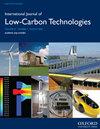Mathematical modelling and verification of open sun drying of cotton seeds
IF 2.3
4区 工程技术
Q3 ENERGY & FUELS
引用次数: 1
Abstract
Abstract Researchers have carried out the kinetics of various agro products for open sun drying, but research articles still need to address such analysis for cotton seeds. Open sun drying of cotton seeds has been experimentally investigated and presented in this paper. Shorting of cotton seeds was carried out to collect appropriate samples in current research work. Cotton seeds were found to have a nearly ovoid shape with an average radius of 2 to 2.5 mm. The initial moisture content of cotton seeds was estimated to be 14.65% wet-basis using the hot air oven method. During drying, the reduction in the mass of cotton seeds was measured at every one-hour time interval. From this data, it was observed that drying occurred with a falling rate period. Drying data were fitted with 10 mathematical models available in the literature. Multi-regression analysis in Excel-solver equation was performed to obtain values of constants and coefficients of these models. Coefficient of determination (R2), reduced chi-square (χ2) and root mean square error were taken as criteria for the selection of the best drying model. The diffusion approach and models by Verma et al. were chosen as the most suitable drying models for open sun drying of cotton seeds. Effective diffusivity was estimated and found within the range suggested in the literature.棉花种子露天晒干的数学建模与验证
研究人员已经对各种农产品进行了露天晒干动力学研究,但对棉花种子的露天晒干动力学分析还有待研究。本文对棉花种子的露天晒干进行了实验研究。在目前的研究工作中,为了收集合适的样品,对棉花种子进行了短切。棉籽呈近卵圆形,平均半径为2 ~ 2.5毫米。用热风炉法测定棉花种子的初始含水率为14.65%。在干燥过程中,每隔一小时测量棉籽质量的减少。从这些数据可以观察到,干燥发生在一个下降速率周期。干燥数据用文献中的10个数学模型拟合。用Excel-solver方程进行多元回归分析,得到各模型的常数和系数值。以决定系数(R2)、χ2和均方根误差作为选择最佳干燥模型的标准。选择Verma等人的扩散方法和模型作为最适合棉花种子露天晒干的干燥模型。对有效扩散系数进行了估计,发现其在文献建议的范围内。
本文章由计算机程序翻译,如有差异,请以英文原文为准。
求助全文
约1分钟内获得全文
求助全文
来源期刊

International Journal of Low-carbon Technologies
Engineering-Architecture
CiteScore
4.30
自引率
4.30%
发文量
106
审稿时长
27 weeks
期刊介绍:
The International Journal of Low-Carbon Technologies is a quarterly publication concerned with the challenge of climate change and its effects on the built environment and sustainability. The Journal publishes original, quality research papers on issues of climate change, sustainable development and the built environment related to architecture, building services engineering, civil engineering, building engineering, urban design and other disciplines. It features in-depth articles, technical notes, review papers, book reviews and special issues devoted to international conferences. The journal encourages submissions related to interdisciplinary research in the built environment. The journal is available in paper and electronic formats. All articles are peer-reviewed by leading experts in the field.
 求助内容:
求助内容: 应助结果提醒方式:
应助结果提醒方式:


